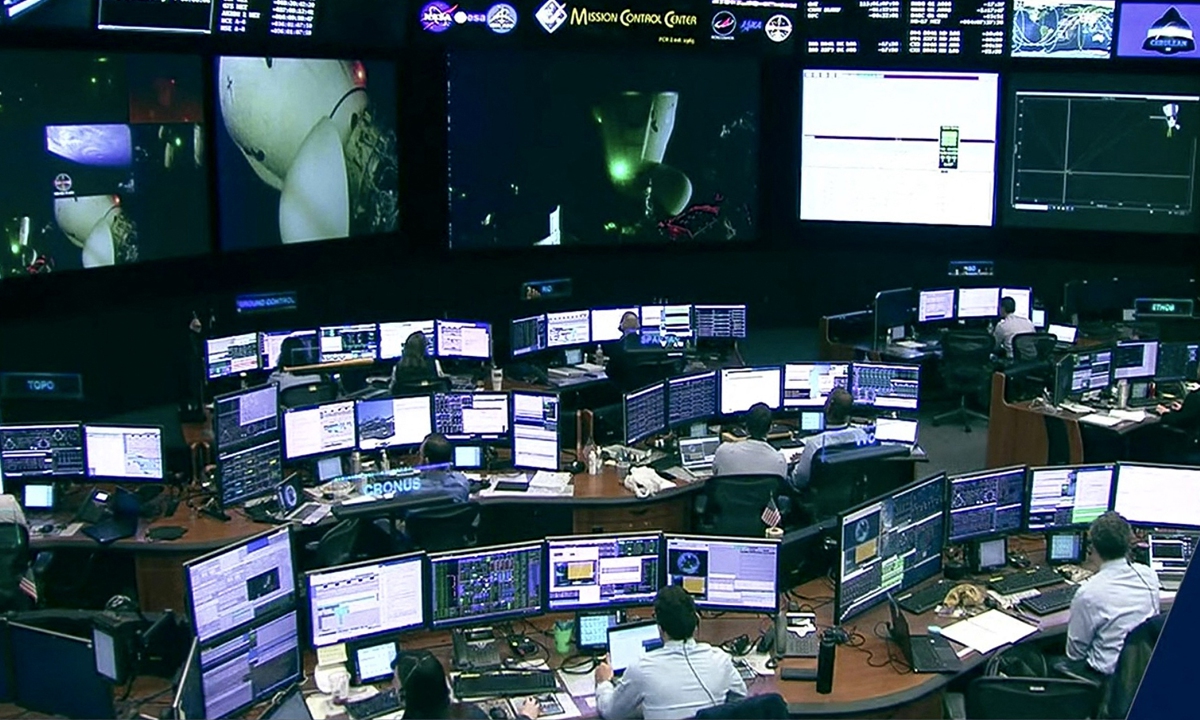Boeing Starliner completes key test mission
Capsule experiences some hiccups on way to International Space Station

In this screengrab from a NASA TV broadcast, the SpaceX control room technicians in Hawthorne, California watch as the crew of the Axiom-1 mission undocks from the International Space Station on April 25, 2022. Photo: AFP
Boeing's Starliner capsule returned to Earth Wednesday in the final step of a key uncrewed test flight to prove itself worthy of providing rides for NASA astronauts to the International Space Station.The gumdrop-shaped spaceship landed in a puff of sand at 4:49 pm local time (2249 GMT) in the New Mexico desert, wrapping up a six-day mission crucial to restoring Boeing's reputation after past failures.
"Just a beautiful touchdown in White Sands this evening," said an announcer on a NASA live feed, as ground control reacted with applause, and a recovery team raced to the landing site.
Orbital Flight Test-2 (OFT-2) was the last hurdle for Starliner to clear before it carries humans in another test flight due to take place by the end of 2022. If that succeeds, the spaceship will begin regular service.
Addressing reporters at a post-touchdown briefing, NASA's Steve Stich, who oversees the commercial crew program, summed up: "We have a few things to work on... but I don't really see any showstoppers."
NASA is looking to certify Starliner as a second "taxi" service for its astronauts to the space station - a role that Elon Musk's SpaceX has provided since succeeding in a test mission for its Dragon capsule in 2020.
Both companies were awarded fixed-price contracts - $4.2 billion to Boeing and $2.6 billion to SpaceX - in 2014, shortly after the end of the Space Shuttle program, during a time when the US was left reliant on Russian Soyuz rockets for rides to the ISS.
Starliner docked with the orbital outpost on May 20, a day after blasting off from the Kennedy Space Center in Florida.
Over the weekend, astronauts living aboard the station opened the hatch and "greeted" the capsule's passengers: Rosie the Rocketeer, a mannequin equipped with sensors to see what astronauts would have experienced, and a plush toy named Jebediah Kerman, the ship's zero-g indicator.
The spacecraft brought back more than 600 pounds (270 kilograms) of cargo, including tanks that provide breathable air to station crew members, which will be refurbished and taken back up on a future flight.
As it flew over the Pacific Ocean, Starliner initiated a de-orbital maneuver, and then ejected its expendable service module, leaving the remaining crew module to withstand temperatures of around 3,000 F (1,650 C) during atmospheric reentry.
Having shed most of its velocity, it deployed a sequence of parachutes culminating in its three giant main chutes, colored red, white and blue. At 3,000 feet (915 meters), it jettisoned its base heat shield.
The mission wasn't without its hiccups, which NASA and Boeing teams are now going to probe thoroughly in case they could cause future problems.
AFP
